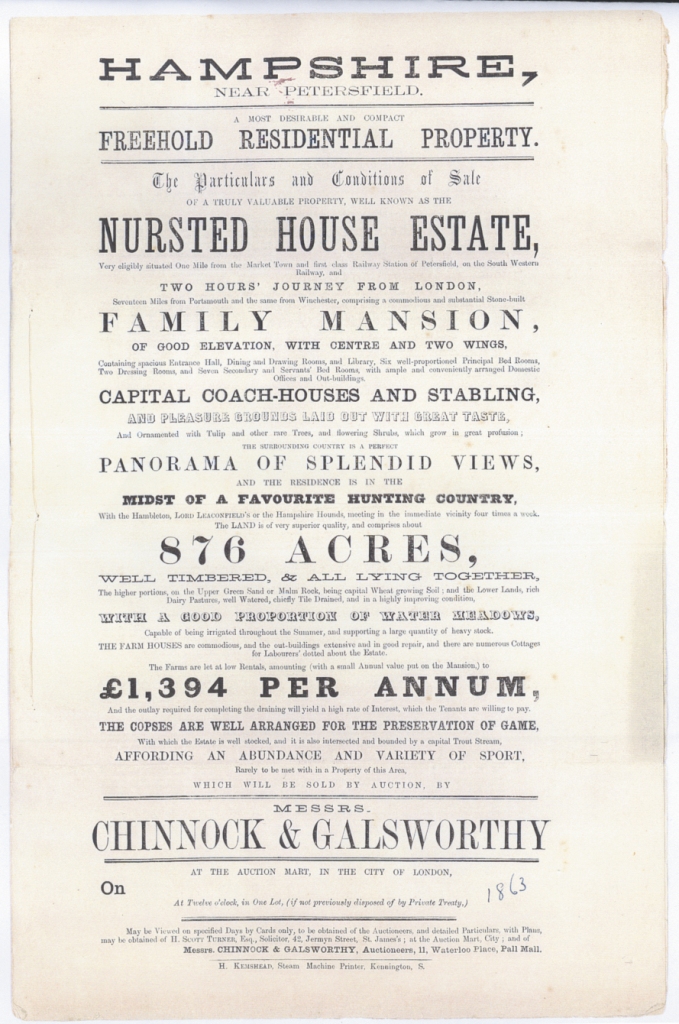The north eastern part of Buriton parish, bounded by Petersfield to the north and over the county boundary to the east by Harting, has long been known as Nursted. Most of this note refers to Nursted House and Nursted Farm, although there is some information about a possible ‘Parish Pest House’ where people suffering from the plague might have been taken.
Background History
An early reference to Nursted has been found in the reign of Henry II, when the monks of Durford Abbey are mentioned as having tilled the terraces of Nursted. It is believed that there was a large house at Nursted in Elizabethan times but that this burnt down. The present Nursted House is thought to have been built around 1690, incorporating parts of an earlier building.
In the journeys of Celia Fiennes one reads that, before 1691, she went on a journey by horseback to visit her aunt, Mrs Margaret Holt, at Nursted and that it was “a neat new built house with brick and stone; a hall, little parlour on the left side and back door into a court built round with all the offices out to the stables barnes; on the right side a great parlour and drawing roome that opened into the garden, which were fine gravel walkes, grass plotts and beyond it a garden of flower trees and all sorts of herbage, store of fruit, a freestone broade walk in the middle to the house; the Chambers are very good and convenient, and in front is a place walled in, beyond is a long ground sett with rows of trees; on the right side of the house is a large grove of firrs halfe scotts, halfe norroway which looks very nobly”. She describes the roads “all about this country” as “very stony, narrow and steep hills, or else very dirty as is most of Sussex but good rich land.”
Nursted House was subsequently the seat of the Hugonin family whose memorials are in Buriton church. In 1751 Francis Lewis Hugonin was resident in the house; in 1816 Francis Hugonin; in 1838 James John Hugonin; and in 1863 Francis James Hugonin. It was in this year that the estate was sold to Samuel Rowe of Llanycefin, Flintshire for £40,000. He died in 1866 and his nephew, John Rowe Bennion, inherited the estate which then remained in the Bennion family for about a hundred years.
A copy of the document advertising the Nursted House Estate for sale, by auction, in 1863 explains how the estate included not only Nursted House and its grounds, but also Nursted Farm, Stanbridge Farm, Heath Farm, Causeway Farm and a number of related cottages. All the farms had herds of dairy cattle as their main enterprise, supported by fodder crops and some cereal growing. The estate was described as having 876 acres of ‘capital land’ and as being ‘in the midst of a favourite hunting country, with the Hambledon, Lord Leaconfield’s or the Hampshire Hounds meeting in the immediate vicinity four times a week during the season’



